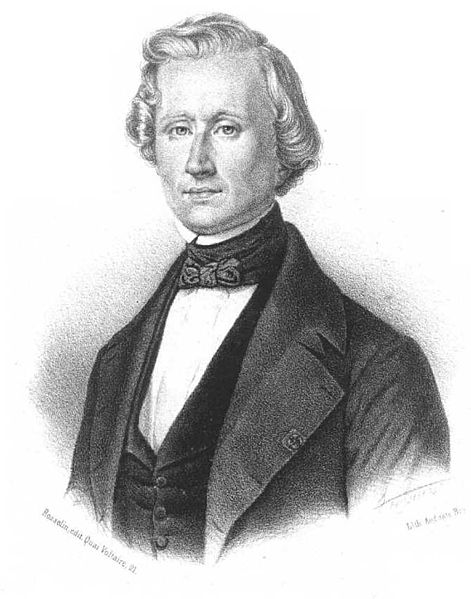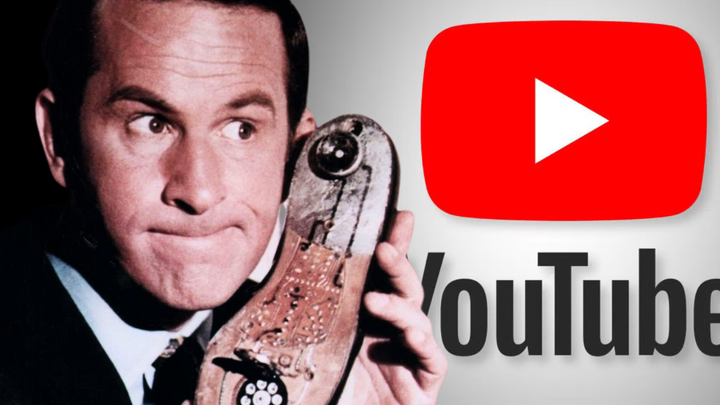Mr. Spock to the bridge: the real-life search for planet Vulcan.
In 1860, a French astronomer was convinced he'd discovered a planet he called Vulcan. Wait, what?

One-hundred and sixty-three years ago, on January 2, 1860, a French mathematician named Urbain Le Verrier made a startling announcement to the French Academy of Sciences in Paris: he had discovered a new planet of the solar system which he named Vulcan. The planet was not far distant from Earth in the cold reaches of space, as the last two planets discovered were--Uranus in 1781 and Neptune in 1846--but actually very close to the sun, inside the orbit of Mercury. Although Mercury and the other inner planets had been known about since antiquity, Vulcan, said Le Verrier, was very tough to find. In fact it could only be observed very rarely. He claimed that an astronomer named Edmonde Lescarbault he had seen it, though, on March 26, 1859, at his observatory in Orgères-en-Beauce, as a small black disc against the brilliant face of the sun. Lescarbault wrote to Le Verrier to tell him about what he saw.
It may sound silly to us today, but in 1860 there was scientific evidence in favor of the existence of planet Vulcan. Le Verrier, who had helped discover Neptune, studied the orbit of Mercury and noticed something strange about it: a discrepancy called perihelion procession which did not quite match what he'd computed as the correct orbit of the planet. He hypothesized that Mercury was being pulled out of its orbit very slightly by another celestial body--but in order to have gone undiscovered for centuries the planet would have to be extremely small and very close to the sun. Furthermore, in addition to Lescarbault's observation of Vulcan, other people had reported seeing a small black dot against the sun which was clearly not a sunspot. Various European astronomers had reported seeing Vulcan as far back as 1819.
The French Academy of Sciences received Le Verrier's announcement with enthusiasm. Le Verrier and Lescarbault both received honors and awards in France for their discoveries. Astronomers and observers around the world turned their telescopes toward the sun--admittedly a risky business--and many reported seeing the elusive planet as late as 1878.

There was just one problem: Vulcan didn't really exist. As we know now from modern observation and spacecraft fly-bys, there is no mysterious planet inside the orbit of Mercury, hiding from us in the glare of the sun. Le Verrier was wrong, and Lescarbault and the others who claimed to have seen it were seeing what they hoped and expected to find--a planet--instead of what they were probably really seeing, which were comets, asteroids or other space debris silhouetted against the sun.
Some people expressed doubt at the time. Another French astronomer, Emmanuel Liais, said he was watching the sun from a telescope in Brazil at the exact same moment that Lescarbault recorded the transit of Vulcan across the sun--but according to Liais there was nothing there. Many of the other reports of Vulcan were sketchy and couldn't be substantiated. After all, it is a little sketchy--how could there be a whole planet there, millions of miles closer to Earth than the distant planets whose existences had been proven, and it had never been seen before? The main piece of "evidence" for Vulcan's existence was the calculations of Mercury's orbit by Le Verrier. Could his numbers be wrong?
Le Verrier died in 1877, firmly believing to the end that he had discovered not one but two planets in his lifetime. Lescarbault also continued to believe that the existence of Vulcan was proven and that he'd helped to prove it. He died in 1894.

So if there wasn't something pulling Mercury slightly out of its orbit, what was going on? In 1915, a mind no less eminent than Albert Einstein's solved the problem. His new theory of relativity, which was a radically different way of understanding the mechanics of gravity, explained Mercury's orbit perfectly. When the Mariner 10 space probe flew by the disagreeable planet in March 1974, it found no mysterious Vulcan anywhere in evidence.
By then, of course, the planet Vulcan had taken on another meaning. Gene Roddenberry named it as the home planet of alien scientist Mr. Spock in his TV show Star Trek which premiered in September 1966. There was, evidently, no comment from the French Academy of Sciences.
The image of the Spock doll is by Flickr user JD Hancock and is used/relicensed under Creative Commons Attribution 2.0 license.
The Value Proposition
Why should you be reading this blog, or receiving it as a newsletter? This is why.



Comments ()